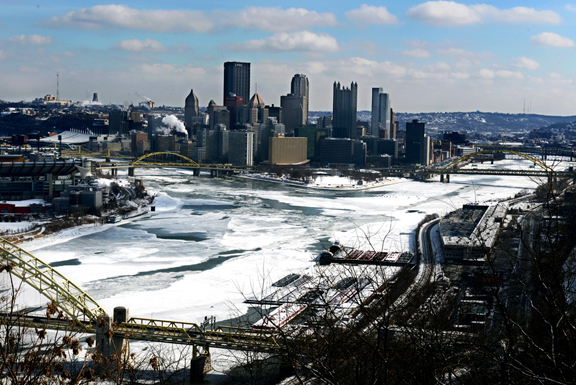
The Post Gazette reports on the winter weather in January 2014
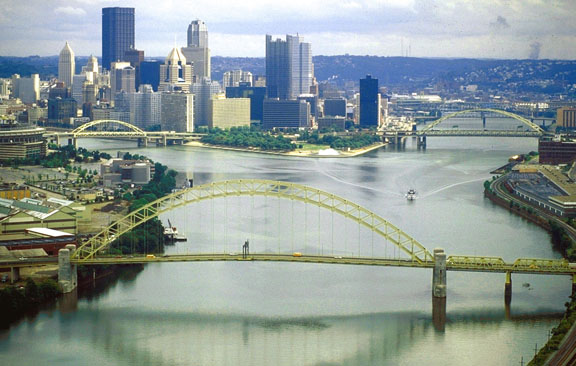 U.S. Army Corps of Engineers circa 1998.
U.S. Army Corps of Engineers circa 1998.
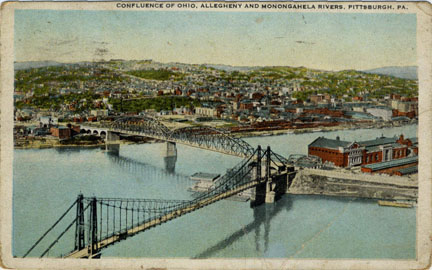
Tourist postcard of the mid 20th century
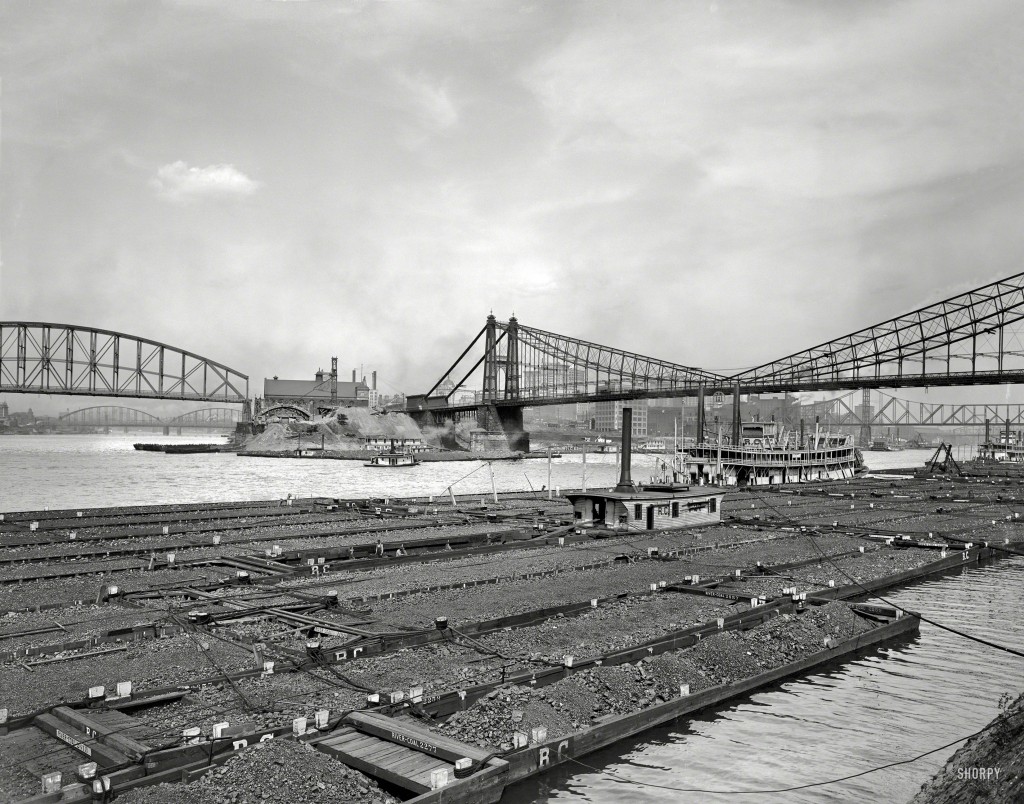
Coal barges at the confluence of Allegheny and Monongahela rivers – 1910
In the mid 1700’s the Colonial iron industry bolstered coal mining in Pennsylvania. The state produces two kinds of coal, hard and soft. Coal Hill, across the Monongahela River from the city of Pittsburgh and now Mount Washington, is the location of a coal stream, a vast layer of coal in the earth. The Allegheny, Monongahela, and Ohio rivers played an important role in transporting the coal and influencing the growth of Andrew Carnegie’s steel mills in the 1800’s. By 1830, the city of Pittsburgh consumed more than 400 tons per day and dubbed “Smoky City.” The coal industry continued to grow with the expansion of the railroad and ship building, followed by the height of the industrial revolution. In 1995, Pennsylvania was the fourth largest coal producing state in the United States. Over 10 billion tons of coal has been mined in 21 Pennsylvania counties during the past 200 years of mining. This is about one fourth of all coal ever mined in the United States.
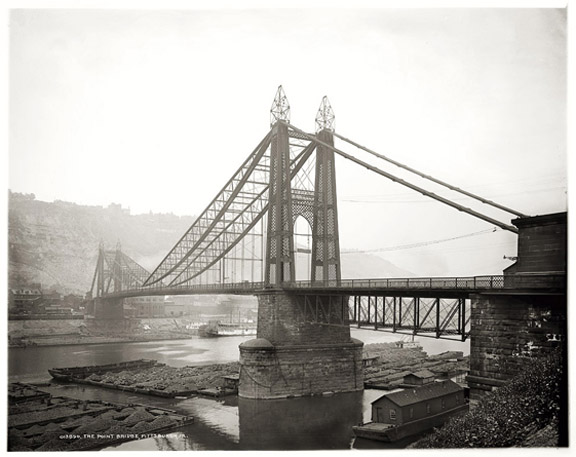
The Point Bridge,circa 1900, that spans the Monongahela River

Map of 1795
Artist Todd Sanders is from Pittsburgh, Pennsylvania, where the Allegheny and Monongahela Rivers converge to form the Ohio River. He dipped three individual small white cloths in the Ohio, Allegheny and Monongahela rivers.













